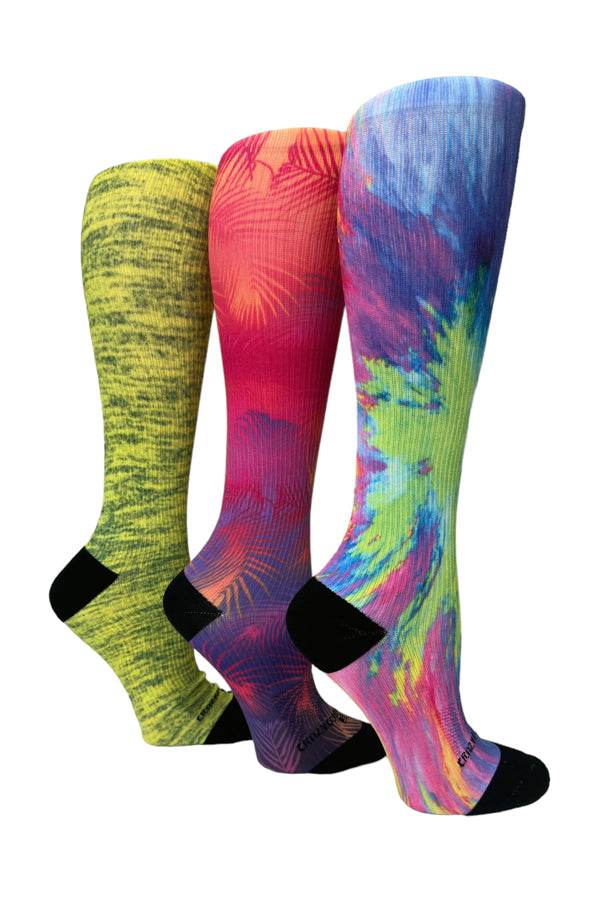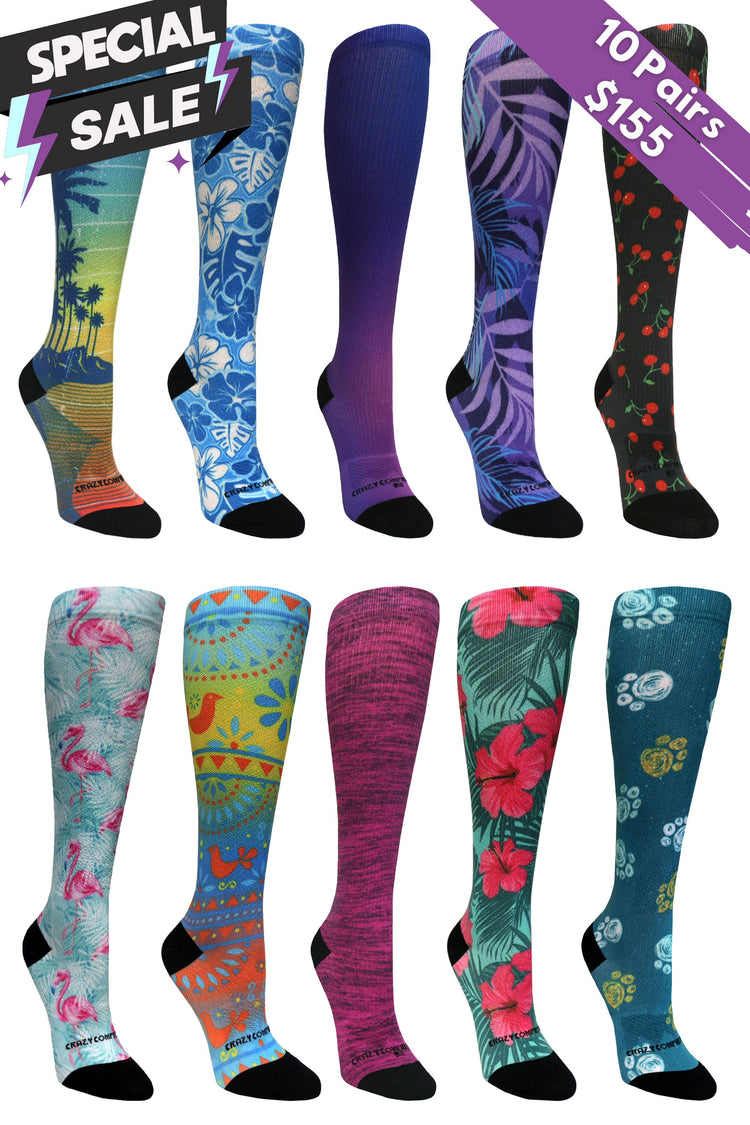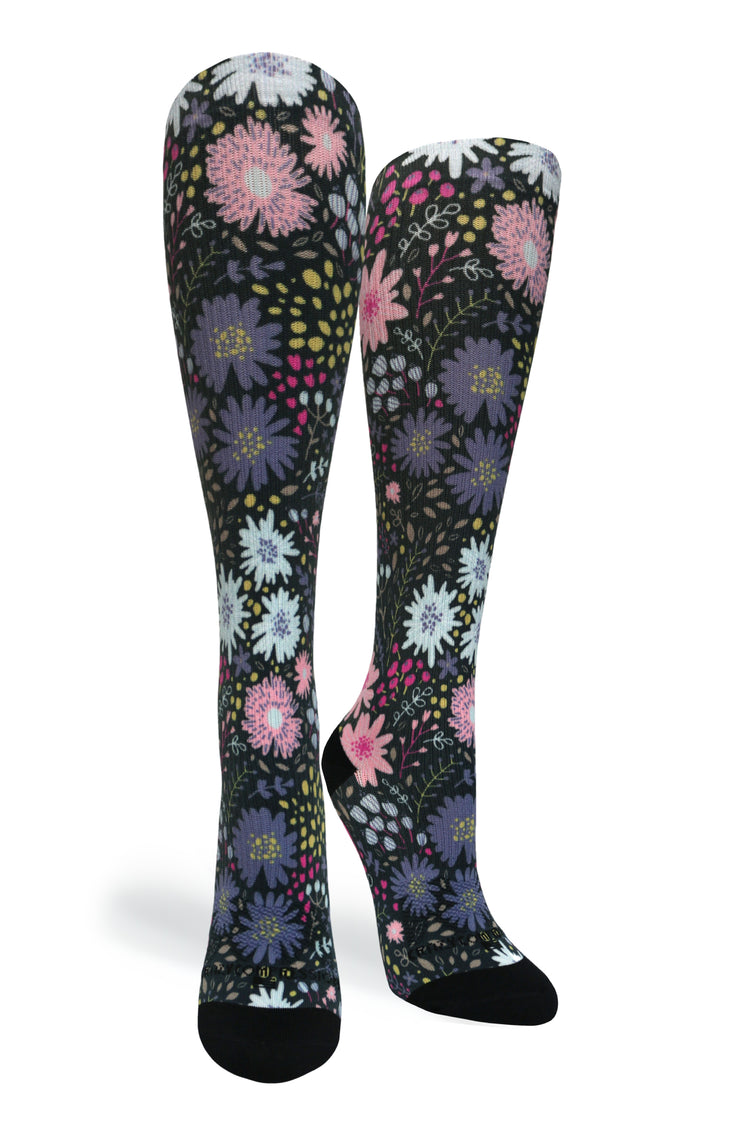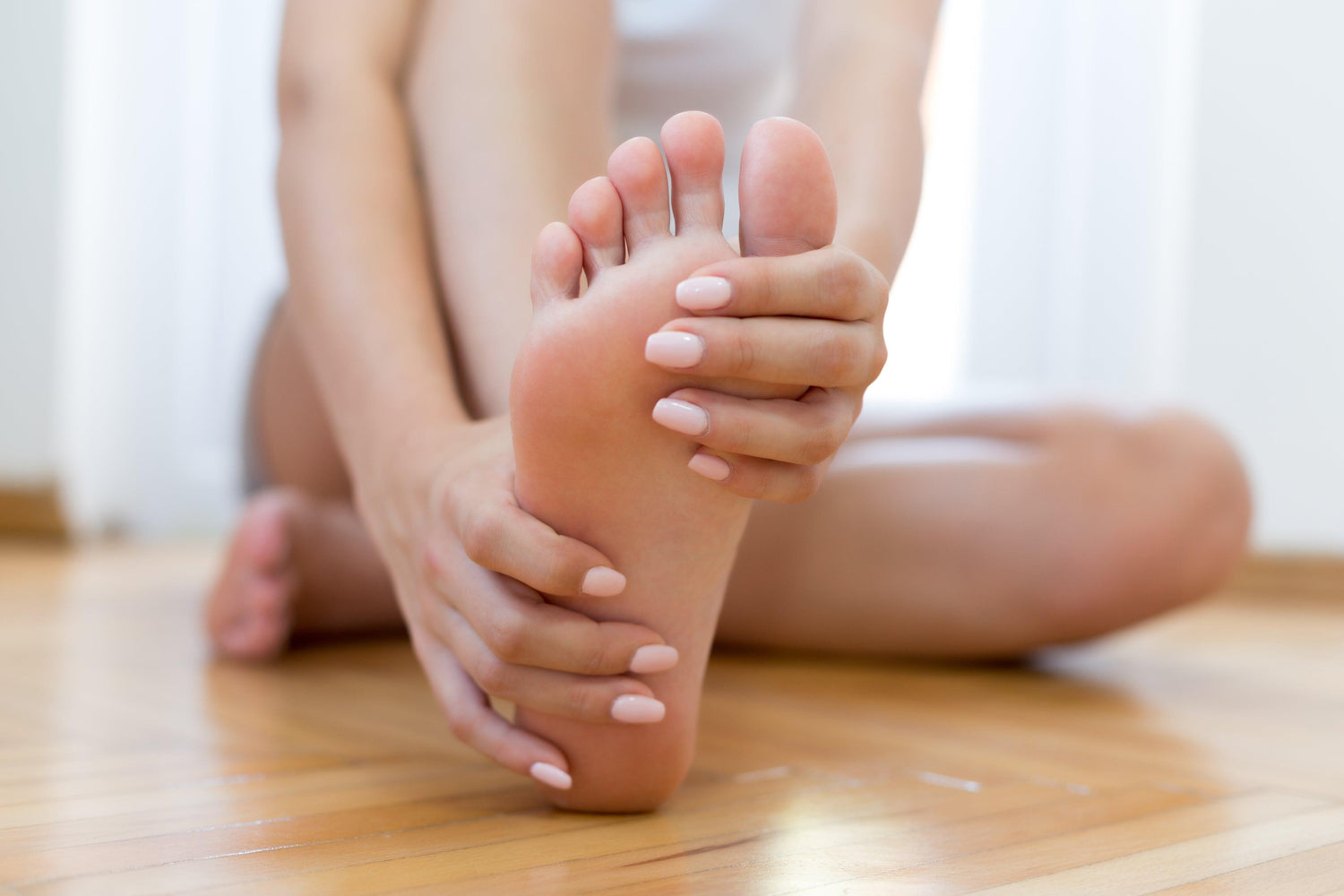Let’s face it: foot pain can be a serious obstacle to enjoying life. Whether it’s caused by an injury, a chronic condition, or overuse from your daily grind, foot pain slows you down and disrupts your life’s rhythm. If this discomfort has become an unwelcome constant, it’s time to make a change and get you back on your feet.
Your foot pain could play out in countless ways—throbbing heels, puffy feet, inflamed toe joints, and swollen tendons. Regardless of the root of your aches, there’s a simple and effective remedy at hand: compression socks.
If you’re on the hunt for some much-needed relief, or if you’ve wondered, “Do compression socks help foot pain?” keep reading to learn more about the causes and solutions for aching, painful feet.
Common Causes of Foot Pain
While foot pain is surprisingly common, the reasons can vary. When in doubt, talk to your doctor. A medical professional will be able to diagnose the underlying cause and form a treatment plan to get you back on track.
A doctor can provide specific care instructions for different foot pain diagnoses, like when and how to do compression. Socks help foot pain when they’re designed to apply pressure to injured areas, which is why many doctors prefer them to sleeves or wraps. Here are some common causes for which doctors prescribe compression socks to treat aching, swollen, or painful feet.
Flat feet
Also known as fallen arches, flat feet occur when the tendons in your foot are too loose to create a normal arch when standing. Flat feet can be caused by an injury, illness, aging or congenital condition. As you age, flat feet are more likely to cause discomfort. Fallen arches can lead to fatigued and achy feet after long periods of standing, which can get in the way of your quality of life.
Plantar fasciitis
The plantar fascia is the soft tissue at the base of the foot that connects the heel bone to the toes and creates the arch of the foot. Inflammation on the underside of the foot is known as plantar fasciitis, and it can cause pain, stiffness, aching, or burning.
Bunions and Corns
Bunions are bulging toe joints on the inside of the foot and corns are thickened, tender patches of skin that form on toes. They can be caused or exacerbated by shoes that don’t fit properly, aren’t supportive enough or create friction inside the shoe.
Swelling from poor circulation
Also known as edema, swelling of the feet is caused by a buildup of fluid due to poor circulation. There are many different causes of edema, such as pregnancy and taking certain medications, and it is usually most noticeable in the feet after spending a lot of time standing.
Rheumatoid Arthritis
Arthritis is the deterioration and inflammation of a joint and is especially common in the big toe joint. As the cartilage in the foot joints breaks down, weight-bearing activities like walking or jumping can become very painful.
Compression Socks to the Rescue!
While foot pain can be frustrating and get in the way of your life, the good news is that there are options available to manage your discomfort. So, do compression socks help foot pain? Yes! Compression socks provide a range of benefits to help manage and prevent tired, aching, painful feet.
Although any over-the-counter or homeopathic therapies claim to decrease foot pain, few actually do. Compression socks help foot pain throughout the day without medication, and many medical professionals prefer a pill-less course over steroids or powerful pain meds.
Here’s how compression socks can help:
Circulation support
Compression socks provide constant pressure to the lower legs and feet, making it easier for your body to pump blood and fluids back up to your heart. This can help with conditions like edema and varicose veins that are caused by poor circulation.
Reduce inflammation
Inflammation in the feet causes pain and swelling, and compression socks help to prevent and reduce this inflammation. This can keep you feeling comfortable by improving the discomfort associated with inflammatory foot conditions such as plantar fasciitis and arthritis.
Prevent friction
Too much friction between the foot and shoe can cause painful blisters, corns, and calluses. Compression socks provide a firm barrier that prevents too much rubbing and keeps the skin on your feet healthy and smooth.
Reduce swelling
Swelling of the foot can be caused by edema but can also be affected by inflammatory conditions such as arthritis or injuries. Compression socks provide firm, consistent pressure that stops your feet from swelling up.
General foot support
Whether you spend a lot of time standing or deal with flat feet, sometimes your feet just need a little extra support. Compression socks can help promote proper foot posture that can prevent those tired, aching feet at the end of a long day.
Foot Pain, Meet Crazy Compression
If you’re looking for something to help manage foot pain, compression socks sure do. Compression socks help foot pain and are an accessible solution. They’re also simple to add to your daily routine, making them an easy choice for managing a huge range of foot complaints.
And if you’re ready to try compression socks, Crazy Compression is here to support your feet. Crazy Compression’s range of graduated compression socks will help to relieve and prevent sore feet, all while looking fun. Our range of men’s, women’s, and wide fit compression socks come in a huge range of styles, meaning there’s a pair for everyone. Try a pair of Crazy Compression socks to take control of your foot pain and get you back feeling comfortable on your feet.































Leave a comment
This site is protected by hCaptcha and the hCaptcha Privacy Policy and Terms of Service apply.